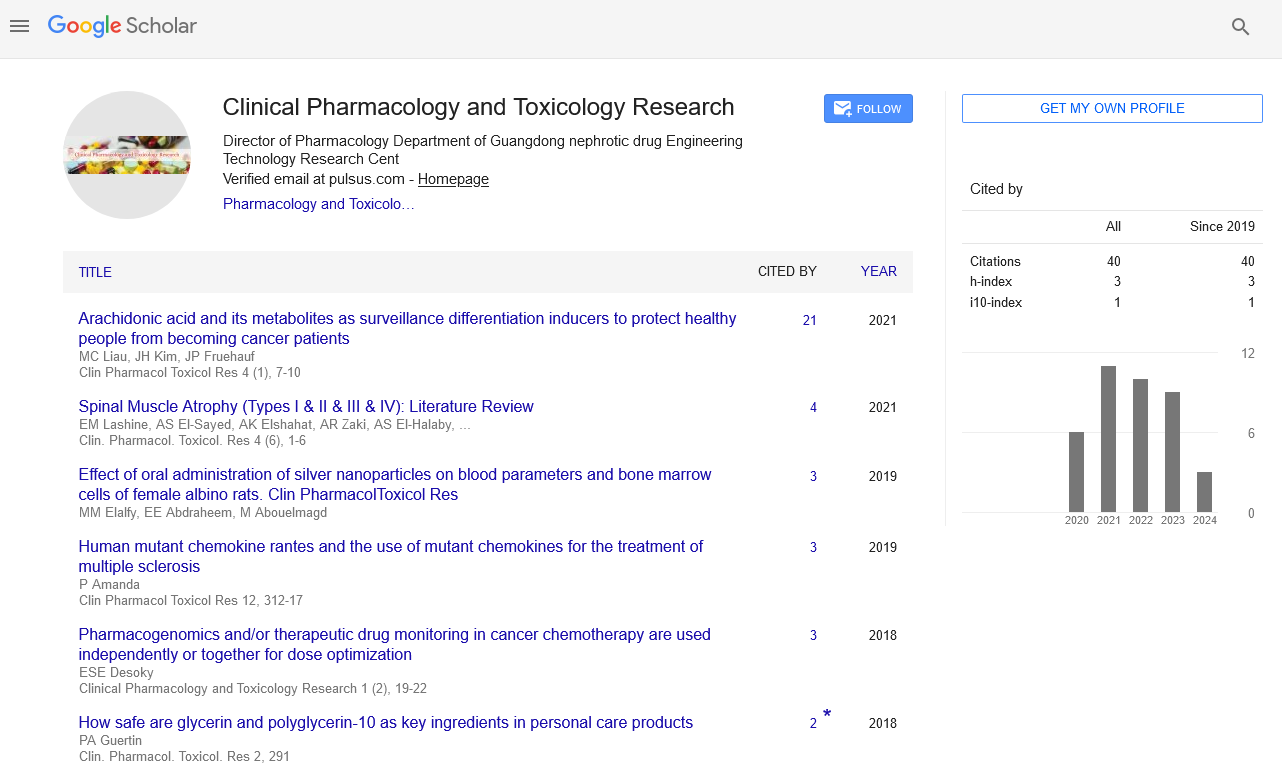An overview of classification and pharmacology of antiarrhythmic drugs
Received: 18-Feb-2022, Manuscript No. PULCPTR-22-3980; Editor assigned: 21-Feb-2022, Pre QC No. PULCPTR-22-3980(PQ); Reviewed: 07-Mar-2022 QC No. PULCPTR-22-3980; Revised: 11-Mar-2022, Manuscript No. PULCPTR-22-3980(R); Published: 18-Mar-2022
Citation: Yan-Ting Zhang . An overview of classification and pharmacology of antiarrhythmic drugs. Clin Pharmacol Toxicol Res. 2022;5(1):1.
This open-access article is distributed under the terms of the Creative Commons Attribution Non-Commercial License (CC BY-NC) (http://creativecommons.org/licenses/by-nc/4.0/), which permits reuse, distribution and reproduction of the article, provided that the original work is properly cited and the reuse is restricted to noncommercial purposes. For commercial reuse, contact reprints@pulsus.com
Abstract
Despite the surfacing of several forms of non-pharmacologic therapy for cardiac arrhythmias, antiarrhythmic drugs keep up to play an important role in the management of patients with this common clinical problem. The key to the actual use of antiarrhythmic drugs is a thorough knowledge of their mode of action and pharmacology. The pharmacology of antiarrhythmic drugs is especially important because patients with cardiac arrhythmias frequently have multiorgan disease, which may influence the metabolism and elimination of antiarrhythmic drugs. The cumulation of toxic amounts of these agents can lead to direct effects including, but not restricted to, ventricular proarrhythmia and malignant bradycardia. The main aims of pharmacologic therapy of cardiac arrhythmia are to aasemble the maximum benefit in terms of arrhythmia suppression while maintaining patient safety. To accomplish these goals, knowledge of the pharmacology of various antiarrhythmic drugs is necessary.
Keywords
Antiarrhythmic drugs; Clinical trial; Therapeutic and toxic effect
Description
Antiarrhythmic drugs are used in the guidance of patients with a variety of forms of cardiac rhythm disorders. The use of various nonpharmacologic methods, such as radio-frequency deletion and implantation of arrhythmia control devices, has only partially supplanted antiarrhythmic drug therapy. For example, antiarrhythmic drugs remain the centerpiece of therapy for patients with atrial fibrillation, the most common tachyarrhythmia. In addition, patients who are treated for ventricular arrhythmias non-pharmacologically normally require adjuvant drug therapy to control spontaneous arrhythmias, which cause symptoms and frequent device activation despite eventually close by the device.
In the last 15 years, we have seen a vast increase in the number of antiarrhythmic drugs accessible for clinical use. Still more antiarrhythmic drugs will be approaching, which will enhance our ability to target specific cardiac arrhythmias without exposing the patient to needless non-cardiac organ toxicity.
In case of antiarrhythmic drugs, pharmacodynamics, by definition, mention to the way a drug affects electrophysiologic properties of the heart. These pharmacologic effects are moderated primarily by drug interaction at the cell membrane. Drugs may impact a variety of ion channels or receptors to make their electrophysiological effects and thus influence cardiac function.
Pharmacokinetics expresses the relation between the dose of a drug and its concentration in plasma and tissue over time. Unfortunately, plasma concentrations are used as a surrogate for tissue concentrations, and many of the pharmacologic principles considered are based on plasma concentration.
Oral absorption is the procedure by which a drug moves from the gastrointestinal tract into the systemic circulation. When drug absorption is evaluated, it is referred to as bioavailability. Several factors influence drug absorption.
After absorption, an antiarrhythmic drug must be allocated to a variety of tissues in the body, particularly to myocardial sites. Dispenation is a function of protein binding, organ perfusion, and tissue affinity. To describe the area to which the drug is allocated, the phrase “volume of distribution” has been coined. Volume of dispention is based on a calculation of the difference between the drug dose and the amount of drug present in plasma. Although it is possible to express the relative volume of distribution, exact quantification is difficult. Protein binding plays a major important role in determining how a drug is distributed.
After an antiarrhythmic drug is administered either parenteral or orally, it will be terminating unchanged or metabolized before excretion. Drugs are most commonly terminated through the kidney and the liver.
Selecting an appropriate drug dose is established directly on the elimination half-life. For most drugs, the time necessary to ample achieve steady-state levels is 5 half-lives. Elderly patients are at particular high risk for the development of antiarrhythmic drug toxicity. Antiarrhythmic drug therapy can be a unreliable art. The drugs available are dynamic and highly effective for specific arrhythmic indications, but many are also limited by a relatively narrow margin between therapeutic and toxic effects. Exact knowledge of the pharmacology of these antiarrhythmic drugs will improve their clinical applicability and safety.





